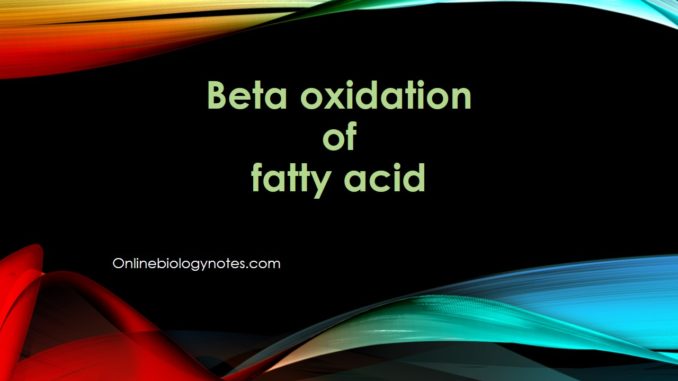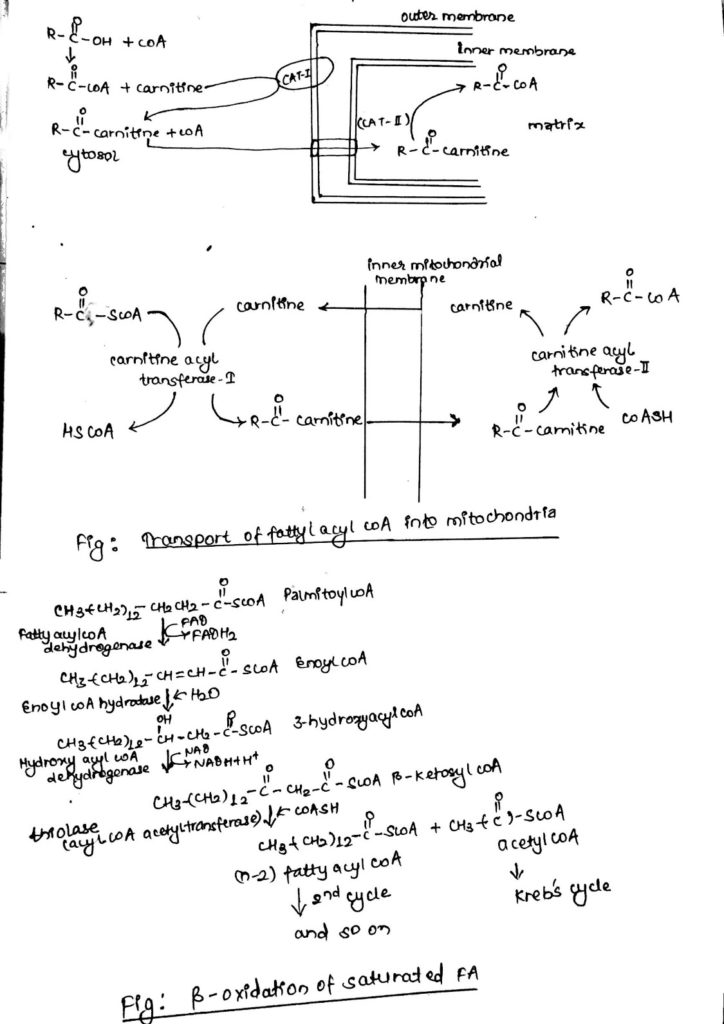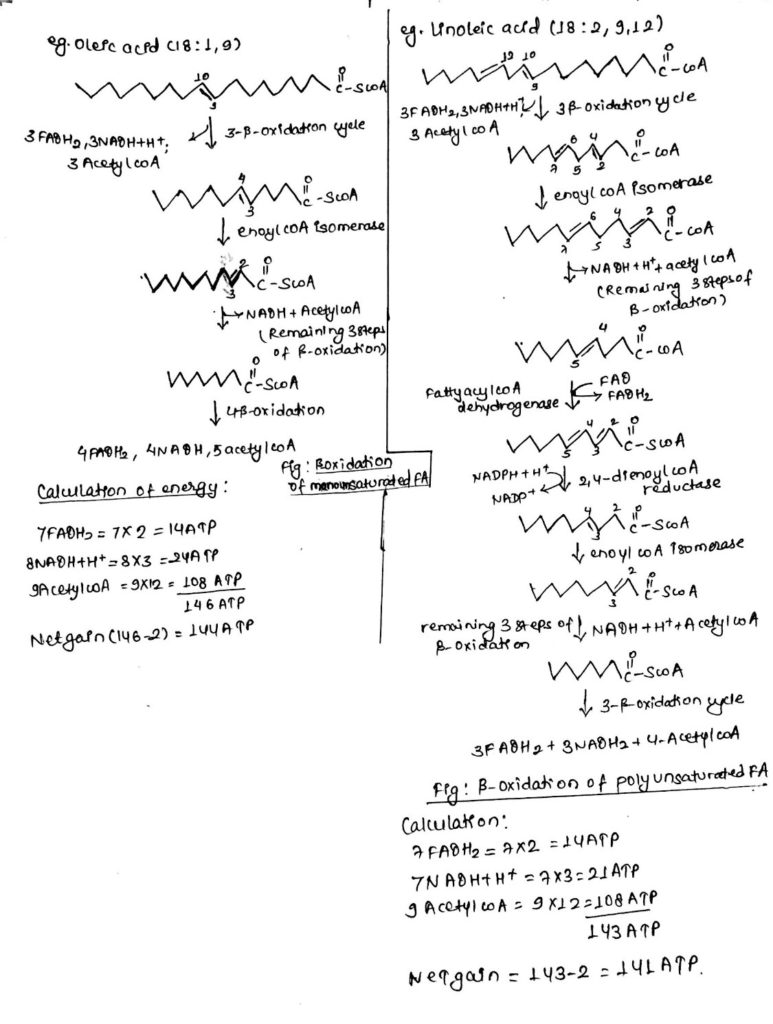
Fatty acids Oxidation
- Oxidation of fatty acid (FA) releases large amount of energy.
- Oxidation of fatty acid occurs in mitochondria cell lacking mitochondria (e.g. RBC) and brain cell (due to blood brain barrier) cannot oxidize FA to release energy.
- Most of the fatty acids are oxidized by beta-oxidation.
Steps in beta-oxidation of fatty acids:
- Activation of Fatty acid
- Transport of fatty acyl coA into mitochondria
- Beta- oxidation
Step I: Activation of fatty acid
- Fatty acid is converted to fatty acyl CoA by thiokinase or fattyacyl CoA synthetase.
- This reaction occurs in cytoplasm and is ATP and Mg2+.
Step II: Transport of acetyl coA into mitochondria
- The inner mitochondrial membrane doesn’t permit fatty acids to pass through it.
- The activated FA enter mitochondria through carnitine shutter.
- This occurs in 4 steps:
- Fatty acyl coA is transferred to carnitine to form fatty acyl carnitine. This is catalyzed by enzyme carnitine acyl transferase I (CAT-I) present on outer surface of mitochondria.
- Then acyl carnitine enters into matrix through carnitine shutter.
- Fatty acyl carnitine is converted into fatty acyl CoA by an enzyme carnitine acyl transferase II (CAT-II) formed in inner mitochondrial membrane.
- The carnitine is released and return to cytosol for re-use.

Step III: Beta-oxidation
- For example; Beta-oxidation of saturated FA (palmitic acid):
- Beta-oxidation occurs in cycle and each cycle consists of sequence of four enzymatic reaction:
- An oxidation step that produce FADH2
- A hydration step
- A second oxidation step that produce NADH+ H+
- A thiolytic cleavage that release a molecule of acetyl coA.
- The fourth step of beta-oxidation repeated for (n/2-1) times where n=no. of carbon atoms.
- For e.g. Palmitic acid consists of (16/2-1) = 7 beta-oxidation cycle.
- Each beta-oxidation cycle produces 1 FADH2, 1 NADHA + H+ and 1 acetyl CoA.
- Total (for palmitoyl CoA):
- FADH2 -7
- NADH2 – 7
- Acetyl CoA – 8
- Total of 7 FADH2, 7NADH+ H+ and 8 acetyl CoA are generated from production of palmitic acid.
- Acetyl CoA enter into TCA and each acetyl CoA release 12 ATP.
- Similarly, FADH2 and NADH+H+ enter ETS cycle to generate 2ATP and 3ATP respectively.
- Therefore,
- 8 acetyl CoA = 8X12=96
- 7 NADH2= 7X2= 14
- 7 NADH2 + H+ = 7X3 = 21
- Total———————181 ATP
- Net ATP gain is 129 (131-2).
- This is because 2ATP are utilized during conversion of fatty acid (palmitic acid) into fatty acyl CoA (palmitoyl CoA).
Example: Beta oxidation of Unsaturated fatty acid (Oleic acid) and Polyunsaturated fatty acid (Linoleic acid)
- monounsaturated fatty acid consists of a double bond. Beta oxidation of monounsaturated fatty acid involves most of the reactions same as found in beta oxidation of saturated fatty acid. However, an extra enzyme enoyl coA isomerase is needed.
- similarly, due to presence of two or more double bonds, beta oxidation of poly unsaturated fatty acid requires two additional enzymes- enoyl coA isomerase and 2, 4- dienoyl coA reductase.

